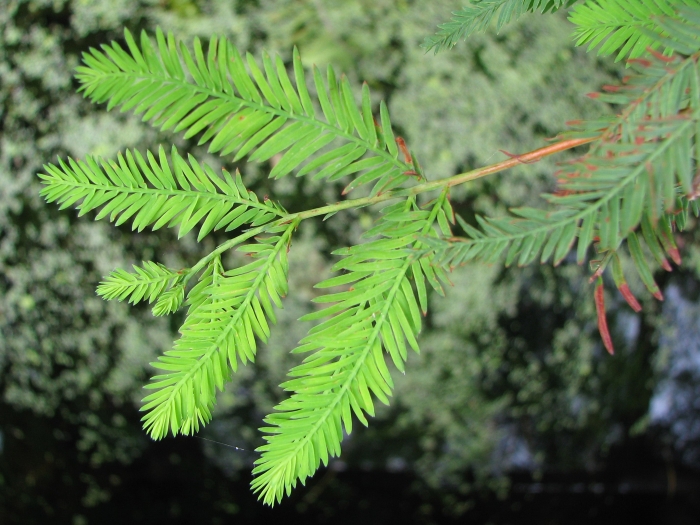Bald Cypress
(Taxodium distichum)
Bald Cypress (Taxodium distichum)
/
/

Agnieszka Kwiecień, Nova
CC BY-SA 4.0














































































Estimated Native Range
Summary
The Bald Cypress is valued for its adaptability to a wide range of soil types, including wet, salty, dry, or swampy conditions, making it a versatile choice for urban planting, large-scale landscapes, and especially for creating wetland habitats. It is often used in groupings in public spaces and has several cultivated varieties. The tree is also appreciated for its wood, which is rot-resistant and used in construction. It requires full sun and can tolerate high amounts of water, making it suitable for areas with poor drainage. While it is a hardy and tough species, it can be susceptible to twig blight and pests such as cypress weevils.CC BY-SA 4.0
Plant Description
- Plant Type: Tree
- Height: 50-70 feet
- Width: 20-45 feet
- Growth Rate: Rapid
- Flower Color: N/A
- Flowering Season: Non-Flowering
- Leaf Retention: Deciduous
Growth Requirements
- Sun: Full Sun
- Water: High
- Drainage: Fast, Medium, Slow
Common Uses
Bird Garden, Butterfly Garden, Deer Resistant, Erosion Control, Fire Resistant, Low Maintenance, Salt Tolerant, Street Planting, Water Garden
Natural Habitat
Wetlands, deep swamps, and along rivers in the Southeastern United States
Other Names
Common Names: Baldcypress , Bald-Cypress , Swamp Cypress , Gulf Cypress , Red-Cypress , Tidewater Red Cypress , Southern Cypress , White Cypress , Yellow Cypress , Gulf Cypress
Scientific Names: Taxodium distichum , Taxodium distichum f. pendens , Taxodium imbricatum , Taxodium distichum var. fastigiatum , Taxodium fastigiatum , Cupressepinnata disticha , Cupressus disticha var. imbricata , Cupressus disticha var. pendula , Cupressus imbricata , Taxodium distichum f. pendulum-elegans
GBIF Accepted Name: Taxodium distichum (L.) Rich.